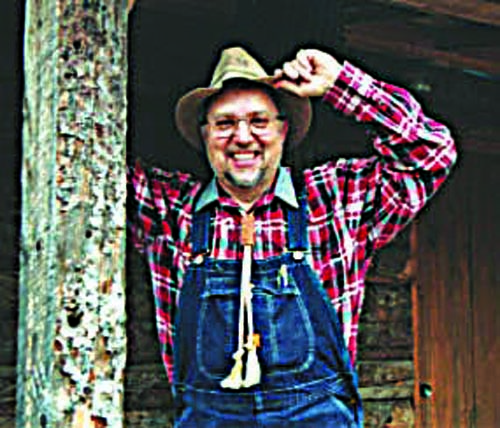Dawn Phelps
Columnist
The pavement was wet, the day overcast. Autumn had descended on Kentucky in earnest; even a little puff of wind sent leaves stirring, whirling before they fluttered to the ground to rest. Many of the tree branches were already bare.
But many leaves still clung to their hosts determinedly, hanging on a little longer. The colors on the trees were dull, and most of the trees wore brown leaves.
My husband Tom and I were driving home from Kentucky after visiting with my sister and her husband who had returned home from rehab after a stroke. It was autumn.
Our mood was quiet. We had been saddened by the fact that the stroke had forever changed both their lives. Sickness has a way of changing the bright colors of our worlds from brightness to a drab grey.
Most of the landscape along the highways, like our mood, was devoid of color. But ahead of us, proudly standing close to the right side of the highway, something caught our eye—a splotch of bright yellow-orange color, a tree that almost glowed. It stood out vivid, distinct, and cheerful against a backdrop of less-than-colorful companion trees, a few of which were already bare.
“Tom, look at that tree!” I said excitedly as our car approached the tree. “Isn’t that beautiful?” That one tree painted a cheery contrast to its dull surroundings.
Our car whizzed past the delightful sight too quickly, but Tom and I talked about that tree as we traveled down the road. We wondered how it had escaped the cold and frost that had taken away the color from other trees.
As we drove, we scanned the road ahead of us, searching for more trees like the yellow-orange one. But we never found another one close to the beauty of that tree.
I tucked the picture of that bright yellow-orange tree in its dull surroundings into my memory. That scene is a reminder about life, nature, and people. Life that brings us the sunny times and grey times—nature with its seasons and people who add joy for others.
During difficult times, hopefully there will be someone there to help brighten your life when you need it. Those who listen and care are those bright spots in our lives. The Mother Theresas of the world who bring hope to the poor. Or the Martin Luther Kings and teachers who encourage us to pursue our dreams.
On a smaller scale, maybe that bright spot is a family member or friend who says, “You can call me anytime.” I had such a friend—I will never forget her. Or maybe your bright spot is one who sends you a personal note. Those who say, “I know you are struggling, but I’ll be here beside you.”
Or someone who says, “Let’s go out for a cup of coffee.” Maybe your bright spot is a good book, the coo of a baby, happy music, or flowers that emerge in the springtime—things to add color to your world.
Sometimes we are challenged to scan the landscape as we travel along, challenged to search for that bit of brightness to give ourselves emotional boosts when we need them. Perhaps it is our desire to escape our surroundings that makes us appreciate the bits of color and brightness more when we find them.
Pablo Picasso (1881-1973), a master artist, once said, “Some painters transform the sun into a yellow spot; others transform a yellow spot into the sun.” In a sense, we are all writing our stories, painting our life pictures, while looking for sunlight.
So maybe we can become someone else’s symbol of hope. Maybe we too can be that bright yellow-orange tree standing in a patch of grey to “transform a yellow spot into the sun,” someone else’s bright spot.
P.S. On May 8th, I attended the Monthly Christian Women’s Outreach meeting in Concordia for the first time. What a marvelous group of ladies! While there, I connected with several “bright spots” who impacted my life in the past—my favorite nursing instructor, nurse friends, a past coworker, and others. I also met new ladies who I believe will be “bright spots” in my future. All I can say is “thank you” to each of you! And thank you to the wonderful leader, Sheryl Swenson!



